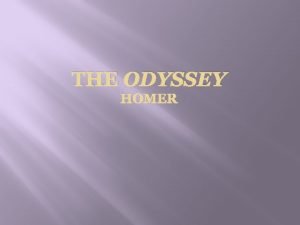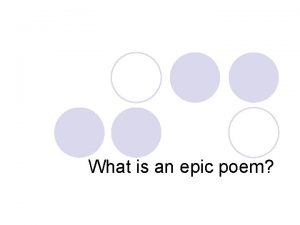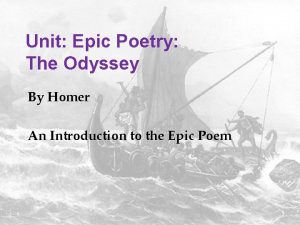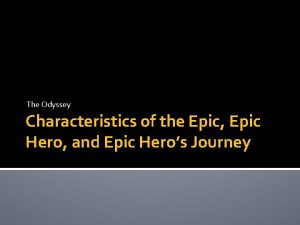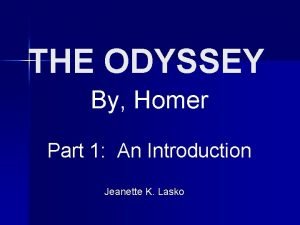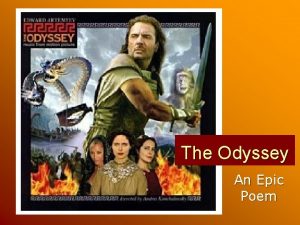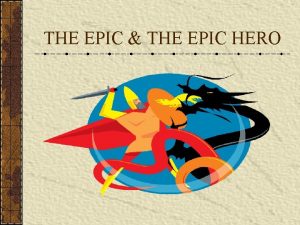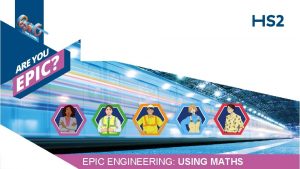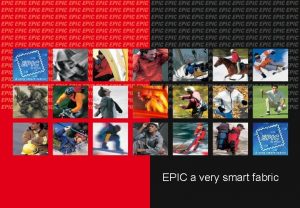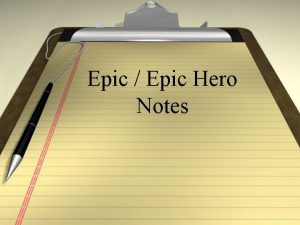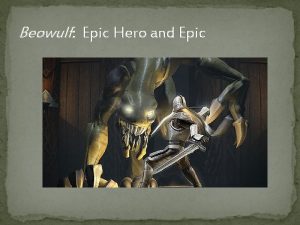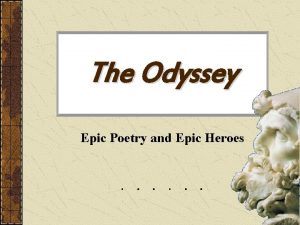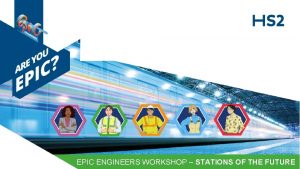EPIC ENGINEERING USING MATHS EPIC ENGINEERING USING MATHS






















- Slides: 22

EPIC ENGINEERING: USING MATHS

EPIC ENGINEERING: USING MATHS Objectives This lesson will enable you to: • Understand more about the roles associated with a large engineering project. • Understand how numerical skills play a key role in analysing data and in evaluating models. • Understand how mathematical skills are used by a range of STEM professionals.

EPIC ENGINEERING: USING MATHS Welcome to the Team We are going to introduce you to the team of professionals who will make a project like HS 2 possible. Watch this short video and think about the kinds of roles that people fill in a project such as this.

EPIC ENGINEERING: USING MATHS Welcome to the Team In this session, we are going to think about your STEMPowers. These are the skills that we will use in the activities, which are useful in STEM careers and further education. You will be rewarded for showing these skills.

EPIC ENGINEERING: USING MATHS Introducing STEMPowers Creativity – Taking risks with new ideas. Teamwork – Working well with others. Communication – Sharing your ideas and feelings. Problem solving – Finding solutions. Investigation – Researching and analyzing. Determination – Having resilience and perseverance. Respect – Respecting others, places and the environment.

EPIC ENGINEERING: USING MATHS Welcome to the Team Self-assess and reflect on your own STEMPowers. Which STEMPower would you most like to improve?

EPIC ENGINEERING: USING MATHS Testing a Tunnel Structure Cut and Cover Tunnels One of the ways of building a tunnel is to use a ‘cut and cover’ design. This involves cutting down through the ground, building a structure over where the track will go and then filling in the cutting. This means the structure has to support the weight of the material above it.

EPIC ENGINEERING: USING MATHS Testing a Tunnel Structure Cut and Cover Tunnels The engineers working on this project have come up with three different designs for the tunnel structure. Their designs are shown on the right. They want to test them to find out which design is the best. Rather than build full size structures they have constructed scale models and will test those. A B C

EPIC ENGINEERING: USING MATHS Testing the designs Each design was tested using a jig. The structure was put in the jig and then loaded on top, to represent the weight of the ground above the tunnel.

EPIC ENGINEERING: USING MATHS Results from structure tests Tunnel structure type Test 1 Test 2 Test 3 Test 4 Test 5 Test 6 Test 7 Test 8 Test 9 Test 10 A 160 g 150 g 160 g 70 g 140 g 150 g 160 g 150 g B 140 g 130 g 150 g 130 g 140 g 130 g 120 g 130 g C 100 g 90 g 100 g 110 g 90 g 100 g 30 g 110 g 100 g

EPIC ENGINEERING: USING MATHS Evaluation a) What do you notice about the results for the different designs? b) Cassandra says that some of the results are outliers. i. Which ones do you think she is referring to? ii. How do you think they should be dealt with? c) Calculate the mean mass that each bridge design is broken by. d) The mass of each of the models is as follows: Design A: 50 g Design B: 30 g Design C: 40 g Which of the designs represents the strongest structure per unit mass of the structure? e) Which STEMPowers did you make particular use of?

EPIC ENGINEERING: USING MATHS Rail Rush! This part of the lesson involves evaluating a game. The game is designed to get young people to think about: • How a rail system is designed. • The relationship between transport services, communities and the environment. Your task is to try out the game and decide how good the game is. This is interesting to play and will also explore how well it represents the real situation. Mathematicians sometimes use games to represent situations but they need to decide how well the game represents the important aspects.

EPIC ENGINEERING: USING MATHS Rail Rush! A four player railway-building game where players compete to build a rail service and get the highest number of total points. CONT’D

EPIC ENGINEERING: USING MATHS Setting up To start the game, each player will need: • 1 x board game and cards • 6 x station discs • 15 x track lozenges • 1 x scorecard Separate the card deck into community, service, environment and construction decks. Place each deck face down on its marked position. Each player chooses one coloured set of counters. The youngest player goes first.

EPIC ENGINEERING: USING MATHS How the game works • The aim of the game is to be the player who has collected the most points whilst growing their rail network. • You can collect track points, environment points, service points or community points. You can also win bonus points which appear during the game. Players also receive points for building track. • Players record their points on their scorecard. • The game ends when the first player lays all of their track.

EPIC ENGINEERING: USING MATHS Starting the game In the first round, each player builds two starter stations anywhere on the board, followed by one length of track, which must join to at least one station. Start with the youngest player, then work clockwise.

EPIC ENGINEERING: USING MATHS Playing the game For each turn, the game runs as follows: • Pick as many cards as you have stations. You can choose a mix of cards from each of the four decks (community, construction, environment, service). • Reveal your cards. Place any rule cards on the rule card spaces and replace the cards at the bottom of their respective decks. Record any points that you have gained. • Build track or stations if cards instruct you to.

EPIC ENGINEERING: USING MATHS Rule cards will appear from time to time in all four decks. These can change the rules of the game. • Only three rule cards can be in play at any time. • The player who picks a fourth rule card must replace the rule cards already in play, by placing their rule card over an existing rule card.

EPIC ENGINEERING: USING MATHS Ending the game The game ends when the first player uses all of their track. Once all track has been used up, add up your track points, environment points, service points, community points and bonus points using your scorecard. The winner has the highest score.

EPIC ENGINEERING: USING MATHS Using your scorecard Tick the boxes on your scorecard whenever you earn points or lay a piece of track.

EPIC ENGINEERING: USING MATHS Reflection a) How well does the game represent: • The challenge of connecting different places? • How difficult it is to cross some types of land, e. g. mountains, compared with others? • The amount of traffic generated by some places as opposed to others? • The importance of protecting the environment? b) Do you imagine that building a real railway has as much risk as this game, or more? c) Suggest improvements to the game to make it more accurate. d) How well can a game represent a process such as constructing a railway? e) Which STEMPowers did you make particular use of?

EPIC ENGINEERING: USING MATHS Reflection Consider the various activities you have undertaken and: • • Consider the STEMPowers you have improved upon. Consider which STEMPowers you found most important. Think about whether you would consider a future in a STEM career. Identify particular progress.
 Homer's first epic is the primary model for the epic of
Homer's first epic is the primary model for the epic of Epic hero stories
Epic hero stories Using system using system.collections.generic
Using system using system.collections.generic Defrost using internal heat is accomplished using
Defrost using internal heat is accomplished using System architecture example
System architecture example Forward engineering and reverse engineering
Forward engineering and reverse engineering Principles of complex systems for systems engineering
Principles of complex systems for systems engineering Engineering elegant systems: theory of systems engineering
Engineering elegant systems: theory of systems engineering Forward and reverse engineering
Forward and reverse engineering Epic reading . com
Epic reading . com Whats an epic poem
Whats an epic poem Epic simile examples
Epic simile examples Famous epic poem by homer
Famous epic poem by homer Types of dirge
Types of dirge Blank verse example in poetry
Blank verse example in poetry What is a quatrain in poetry
What is a quatrain in poetry Homers epic poem
Homers epic poem Epic hero cycle odyssey
Epic hero cycle odyssey Who was homer
Who was homer Why is the odyssey an epic poem
Why is the odyssey an epic poem Epic greek tale that's paired with the iliad
Epic greek tale that's paired with the iliad Epic proportions mythological meaning
Epic proportions mythological meaning Definition of a epic hero
Definition of a epic hero
